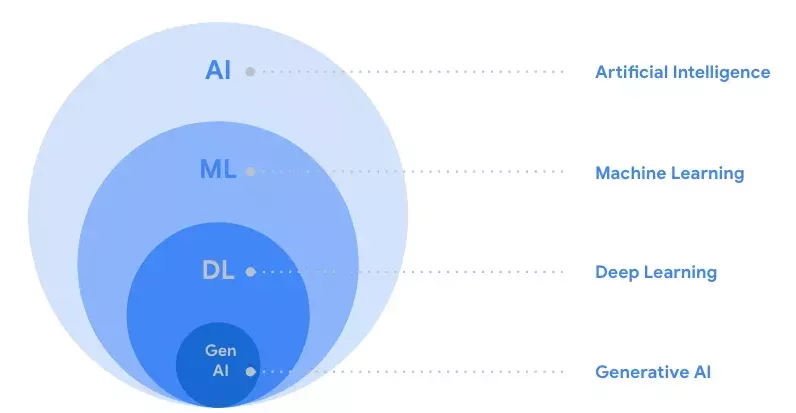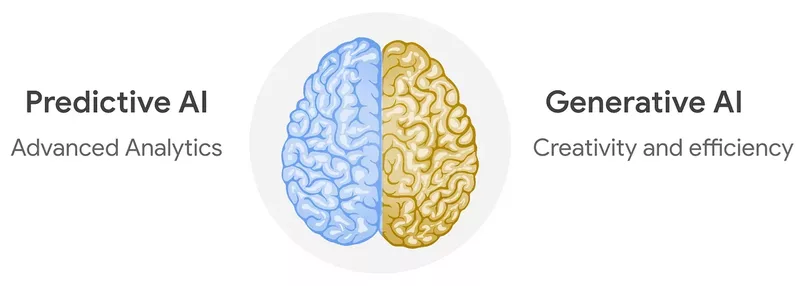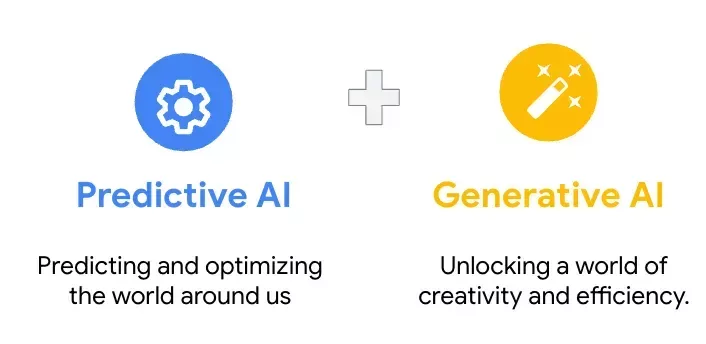
I work at Google in the Solution & Thought Leadership team (aka S&TL). Our role is to help large companies adopt AI technologies to boost their performance and innovate. In the past three years, I have been collaborating with different AI teams and decision makers across North America to build and test custom AI models for specific business needs.
In 2024, I have noticed a significant change in my interactions with corporate stakeholders. They all want to use generative AI to solve their business problems.
For some of these clients, if I ask them why generative AI, they usually look back at me intrigued. They do not fully get the question. For some others, they mention a strategic objective identified by the board or a C-level executive. But more often than not, generative AI is not the best answer to address their business priorities.
No, AI was not invented in November 2022
When OpenAI released ChatGPT 3.5 in November 2022, millions of people all over the world started to play with this intriguing new tool. My neighbor. The guy at the grocery store. My uncle and my little niece. AI users were everywhere and on the lips of everyone.
This is when the hype about generative AI started, and it has not stopped since. And professionally, I now have to start almost all discussions with a summary about the strengths and limitations of generative and predictive AI.
The AI Landscape and the Human Brain Analogy
In the 1960s, Roger W. Sperry conducted split-brain experiments and concluded that the left hemisphere is handling mostly analytical function while the right hemisphere focuses more on creative function.
According to this theory, the left brain is used to solve math problems, repair a device or software, or analyze sales data. Creative functions such as writing poems, designing a clothing line or crafting advertising text for a marketing campaign would then be done by the right brain.
(Hemispheric disconnection and lateralization has since been contradicted, but neuroscientists seem to agree that specific brain areas are dedicated to specific functions and capabilities such as language, vision, movements.)

An AI discussion usually starts with an overview of the landscape and terminology:
- Artificial Intelligence (AI): The ability for a machine to imitate human behavior.
- Machine Learning (ML): A subset of AI that allows a system to automatically learn from data and improve from experience.
- Deep Learning (DL): A method of AI that processes data in a way that is inspired by the human brain and learns from vast amounts of data.
- Generative AI (GenAI): AI system capable of generating text, code, images, audio, video in response to prompts.

With these definitions, it is clear that generative AI is a small subset of the AI landscape. and is only able to solve a portion of business problems.
We can use the brain analogy to differentiate predictive AI from generative AI.
- Predictive AI finds patterns and connections that humans would have difficulty identifying in large amounts of information. It is used to analyze, predict, and optimize the world around us. Using the brain analogy, predictive AI is the left part of the brain.
- Generative AI creates new content in response to a prompt, using an extensive knowledge base. It is used to stimulate creativity and efficiency. Generative AI can be seen as the "creative part" of the brain.

AI Fit: Matching Technology to Tasks
Depending on your business needs, you will have to identify which AI category is a better option.
Predictive AI is good at anticipating the future and at analyzing historical data. Predictive AI models have proven to be very efficient for numerous use-cases, including:
- Fraud detection: Analyze transaction patterns to identify and prevent fraudulent activities.
- Customer Lifetime Value: Predict long-term value of customers.
- Customer churn prediction: Identify customers likely to leave.
- Demand and sales forecasting: Estimate how much demand there will be for a product in the future.
- Predictive maintenance: Forecast equipment failures to minimize downtime.
For these predictive scenarios (and for many others), generative AI will often be quite useless. Current generative AI models prioritize creating coherent outputs over generating statistically sound predictions (plausibility over accuracy).
Generative AI, in its current form, is not the appropriate tool for predictive tasks. Instead, generative AI models shine when you need to boost your creativity and efficiency. They can be used to create, discover, summarize, converse, and automate. While this AI space is still quite nascent, typical generative AI use-cases include:
- Text generation: Write articles, summaries, marketing copy, and creative content.
- Image, video, audio generation: Compose music and generate image and videos.
- Product design: Generate innovative product designs and prototypes.
- Simulation: Generate realistic scenarios to brainstorm on a specific topic.
- Virtual assistants: Create conversational AI agents to provide personalized experiences.
Predictive AI is very limited with these scenarios and cannot reach the level of sophistication of generative AI models. Generative AI is the best tool for content creation and generation.
Nevertheless, it is important to mention that current generative AI technologies are still limited in specific areas.
- Generative models are not deterministic, which means they can produce a different output every time you use them. As an example, if you generate an image with a generative model using the same prompt, the image will be different each time.
- Generative models don’t understand the world. They produce outputs based on what is the most plausible given their training data set. In text generation, they propose a word or a sentence with a high probability given the previous word. But there is no understanding of the overall meaning of the text.
- Generative models can generate outputs that are completely incorrect or nonsensical. The phenomenon is called “hallucination.” Models can produce something that is plausible at first glance (high probability), but inaccurate. As an example, in a generated image, a cat can have four legs or a human two left arms.
- Generative models can reinforce societal bias and stereotypes. Because generative models strongly depend on the data used to train them, text creation, text summarization or image and video generation can amplify stereotypes on gender, race or socioeconomic status. While predictive models can also be biased, mitigating bias in predictive models is often easier as it mostly comes from explicit data and feature selection.
Combining Generative and Predictive AI
Recent neuroscience research shows that a lot of convoluted human actions are conducted using multiple parts of the brain (left and right hemisphere).
The same is true with artificial intelligence. A lot of advanced business needs can only be satisfied using a mix of predictive and generative AI.
Some of my Google projects this year involved sentiment analysis, data exploration, and personalized generative outputs. A hybrid approach combining predictive and generative AI capabilities was required to deliver the appropriate solutions.
- Sentiment analysis: Sentiment analysis can be as simple as a binary classification or a multi-label classification. Predictive AI can analyze online product reviews to identify if, overall, a review is positive or negative. But if you need more granularity in your analysis, a typical classification will fall short. Maybe the global review is positive, but some aspects of the products are criticized. Maybe the review is negative because the marketing campaign was not well received (but not because of the product). This is where generative sentiment analysis will bring additional value. It will help you extract sentiment for specific aspects of a review (product, brand, campaign, design, features, and so on).
- Data exploration: If you are an AI practitioner, you know data analysis is crucial for building predictive models. A significant part of the work is the exploratory data analysis (EDA). You can use generative AI to complement traditional EDA and get insights on data trends, anomaly detection, imbalance datasets, data imputation and data augmentation. Generative AI can be leveraged during the development of a predictive AI model.
- Personalized generative outputs: Imagine you are asked to create a model that generates images for a marketing campaign. Your model will naturally leverage generative AI technologies. But if you need to generate specific images for existing customers based on their historical relationship with the company, then generative AI alone is no longer sufficient. You will need a predictive AI model first, and this model will predict customer segments, or customer lifetime value. Then these predictions will be used for hyper personalization of image generation. The predictive AI outputs will modify the generative AI inputs (prompts) to generate specific images for each customer (or group of customers). The AI solution uses predictive AI to feed generative AI models.
Through these project examples, we can see how predictive and generative AI complement each other to meet different needs and create more impactful AI solutions.

Choosing the Optimal AI Solution
The AI landscape is complex and evolving at a rapid pace. It is not always easy to identify which approach is the best fit for a given business problem.
Predictive AI uses math and statistics to forecast real-world outcomes. Generative AI relies more on patterns and plausibility than precise calculations, making it less reliable for many predictive tasks. Generative AI is a powerful tool for tasks that require creativity, innovation, automation, and exploration.
Once you know the strengths and weaknesses of each approach, consider the following aspects for an assessment:
- What is the business problem, and what kind of output is needed? Predictive models are usually a good fit for a numeric or classification prediction while generative models excel in content generation (text, image, video, audio)
- What data is available to address the problem. Structured and labeled data can easily be leveraged using predictive models. Large corpus of text is often a better fit for generative models.
- Are you more looking for accuracy or creativity? Predictive models prioritize accuracy, while generative AI focuses on creating novel outputs.
- Do you have strict explainability requirements? Predictive models are often more interpretable, while generative models can produce more creative results difficult to explain.
- Can you benefit from a hybrid approach? Generative AI is not the answer to every problem, nor is predictive AI. And sometimes combining the two is the best approach.
With the human brain, recent research proved that one hemisphere cannot properly function without the others. The same is true with predictive AI and generative AI. Predictive and generative AI work together to create more impactful AI solutions.
Originally published in Towards Data Science.